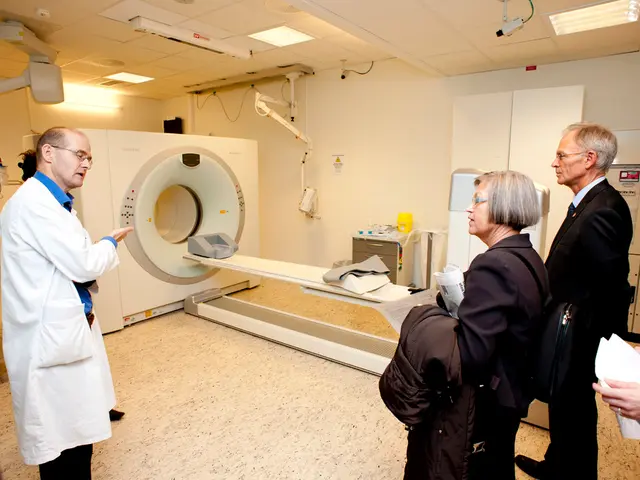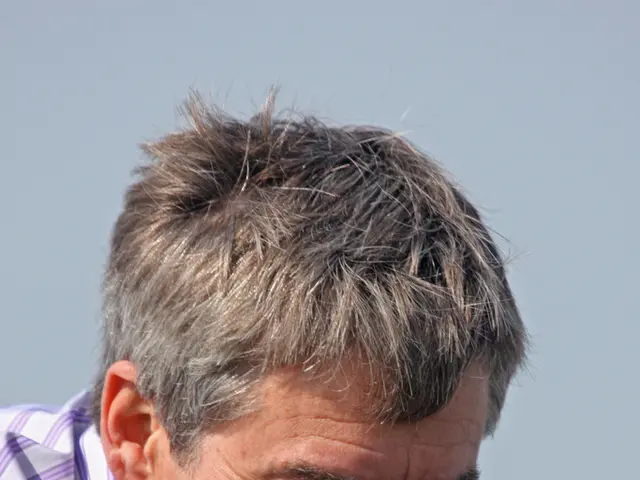Therapeutic Aversion: Purpose, Illustrations, and Debate
Unconventional Therapies: A Deep Dive into Aversion Therapy
Aversion therapy isn't your typical method of treatment; it's a behavioral technique that links an unwanted behavior with an unpleasant experience to deter the behavior. Known as "aversive conditioning" or "deterrent therapy," it's used to curb habits like smoking, alcohol use disorder (AUD), and even gambling addiction.
The Purpose of Aversion Therapy
Aversion therapy's goal is to create an unpleasant association with the targeted behavior or habit, thereby discouraging it. This treatment has stirred controversy, with questions about its long-term effectiveness as a remedy for addiction-related behaviors.
A Cross-section of Aversion Therapy Methods
- Emetic Counter Conditioning (ECC) - This type of therapy may help reduce alcohol cravings in individuals with AUD. During sessions, a person takes a medication to induce nausea and vomiting while tasting and swallowing various alcoholic beverages. The aim is to link drinking alcohol with the sense of nausea or being ill.
- Graphic Warning Labels - These are prevalent on cigarette packages across 118 countries. The disturbing images depicting the potential health risks associated with smoking serve as a type of aversion therapy.
- Rapid Smoking - This method involves rapid puffing on a cigarette to induce unpleasant sensations that make it unbearable, aiming to reduce nicotine dependence. However, research suggests it's not an effective long-term treatment for quitting smoking [6].
- Rubber Band Aversion Therapy - Originally developed for obsessive compulsive disorder (OCD), the therapy involves a person snapping a rubber band on their wrist each time they have an obsessive thought. The idea is that the pain from the band will create a link between obsessive thoughts and physical discomfort, eventually reducing their frequency. Unfortunately, research shows it's not an effective therapy for OCD [7].
The Controversies Surrounding Aversion Therapy
Some mental health professionals argue that aversion therapy is unethical because it employs punishment as a form of treatment. In the past, there was a form of aversion therapy known as "conversion therapy" that aimed to 'treat' homosexuality. Considered a form of abuse, it listed homosexuality as a mental health disorder until 1973 [8].
Opposition to using aversion therapy for addiction-related behaviors continues today, with concerns about administering an unpleasant stimulus that might cause psychological or physical distress. There's also a call for it to be banned in all U.S. states [9].
The Case for Aversion Therapy: Short-Term Successes
Research indicates that aversion therapy can decrease addictive behaviors in the short term. For instance, a 2017 study on the effects of emetic counter conditioning on AUD showed that participants reported aversion or avoidance of alcohol at 30, 90 days, and even 12 months post-treatment, with 69% of participants still sober [10]. Brain scans revealed significant reductions in craving-related brain activity, suggesting potential effectiveness.
Long-Term Outlook for Aversion Therapy
However, the jury's still out on whether aversion therapy provides long-lasting results. Research into its effectiveness for addressing other addictive behaviors like smoking and overeating is scarce [10]. A 2016 review notes that aversion therapy does not appear to be an effective long-term treatment for nicotine addiction or overeating.
In the End: A Combined Approach
Given these findings, it seems that aversion therapy may be most effective when integrated into a larger treatment plan involving other therapeutic approaches. Recent advancements in understanding brain function and plasticity can inform the development of more personalized and effective treatments [3]. In addition, medication-assisted treatments and behavioral therapies like cognitive-behavioral therapy (CBT) have shown greater promise and greater acceptance in the medical community [5].
Enrichment Insights:
- Cognitive-behavioral Therapy (CBT) - A popular and effective alternative to aversion therapy, CBT focuses on changing thought patterns and behaviors, often with more positive long-term outcomes compared to aversion therapy [5].
- Medication-Assisted Treatments - Medications like naltrexone and acamprosate are proven to significantly reduce cravings and improve abstinence rates when used alone or in combination [5].
- Brain Plasticity and Addiction - Recent advances in understanding brain function and plasticity highlight the complex neural mechanisms involved in addiction, paving the way for more targeted and effective treatments [3].
- Psychotherapy, such as cognitive-behavioral therapy (CBT), presents a popular and effective alternative to aversion therapy, offering more positive long-term outcomes.
- Aversion therapy, like Emetic Counter Conditioning (ECC) used for alcohol use disorder (AUD), can decrease addictive behaviors in the short term, as shown by a 2017 study.
- Controversy surrounds aversion therapy due to concerns about its long-term effectiveness, ethical implications, and the potential for psychological or physical distress.
- In 118 countries, graphic warning labels on cigarette packages serve as a form of aversion therapy, depicting potential health risks to discourage smoking.
- Aversion therapy is influenced by science and psychology, with the goal of creating an unpleasant association with the targeted behavior to deter it.
- In 2022, the health-and-wellness sector might consider exploring alternative medicines in conjunction with aversion therapy for treating disorders like addiction.
- Historically, controversial forms of aversion therapy, like "conversion therapy," were used to treat homosexuality as a mental health disorder, but such practices are no longer considered acceptable in the medical community.






